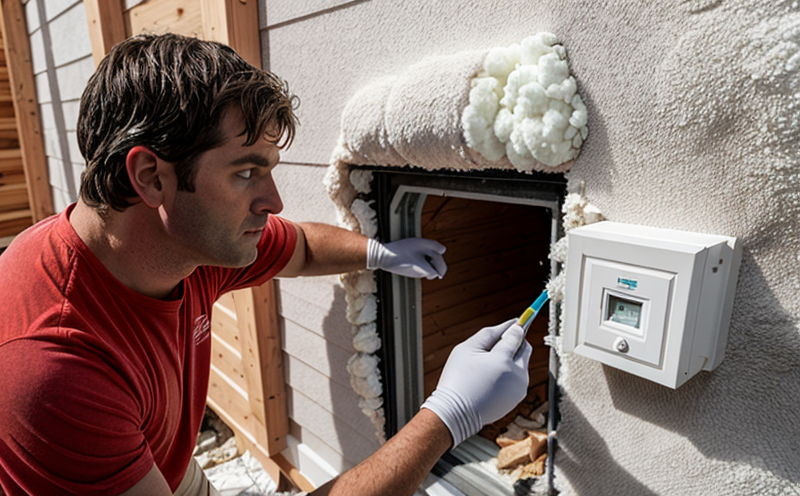Insulation & Thermal Performance Testing
In the realm of building and infrastructure testing, insulation materials play a pivotal role in ensuring energy efficiency, comfort, and durability. Insulation is not merely a component; it is the backbone of modern construction that significantly impacts both environmental sustainability and occupant well-being. The primary goal of insulation & thermal performance testing is to verify that insulation materials meet specified standards for heat retention or loss. This ensures buildings are designed to withstand varying climatic conditions while minimizing energy costs.
Thermal performance testing involves a series of methodologies aimed at quantifying the insulative properties of materials under controlled laboratory settings. These tests are essential in validating product claims and ensuring compliance with local, national, and international standards such as ASTM C518 for standard test methods for thermal transmission coefficient (R-value) and ISO 9027:2016 for thermal insulation—classification of thermal insulation products.
Understanding the importance of accurate testing extends beyond mere compliance. It impacts the overall building performance, occupant comfort, and environmental footprint. For instance, improper insulation can lead to significant heat loss in winter or excessive heat gain in summer, affecting both energy consumption and living conditions. Therefore, precise thermal performance testing is critical for manufacturers, architects, and engineers aiming to design efficient buildings.
The process of thermal performance testing typically involves several steps: specimen preparation, temperature calibration, application of standardized loads, data collection using infrared cameras or heat flux sensors, and subsequent analysis against industry benchmarks. Specimens are carefully prepared to replicate real-world conditions as closely as possible. Instruments like thermocouples, heat flow meters, and calorimeters are used to measure thermal resistance accurately.
Customer impact from this testing is profound. It ensures that buildings perform optimally under varying climatic conditions, leading to reduced energy bills for occupants and lower operational costs for property managers. Compliance with standards also enhances a company’s reputation in the market, attracting environmentally conscious clients who value sustainable practices.
- Customer Impact: Reduced energy consumption, improved comfort levels, enhanced building durability.
- Satisfaction: Lower utility costs, better indoor climate control, increased property value.
International acceptance and recognition are key factors in the success of insulation & thermal performance testing. Standards such as ISO 9027:2016 and ASTM C518 are widely adopted across numerous countries, ensuring that tests conducted meet global benchmarks. This standardization fosters trust among stakeholders and facilitates seamless international trade.
Why It Matters
The significance of insulation & thermal performance testing cannot be overstated in the building and infrastructure sector. Efficient insulation ensures that buildings are not only energy-efficient but also environmentally friendly, contributing to sustainability goals set by various governments around the world. The global push for green buildings has led to increased demand for accurate and reliable testing methods.
From an economic perspective, optimizing thermal performance can lead to substantial savings in heating and cooling costs over time. For developers and property owners, this translates into higher returns on investment due to lower operational expenses. Moreover, it helps in meeting regulatory requirements imposed by authorities concerned with energy efficiency.
In terms of occupant health and comfort, proper insulation significantly improves indoor air quality and temperature stability. This is particularly important in regions experiencing extreme weather conditions where maintaining a consistent indoor environment becomes crucial for residents' well-being.
Additionally, the environmental benefits cannot be ignored. By reducing heating and cooling demands, buildings equipped with efficient insulation contribute less to greenhouse gas emissions, aligning with broader efforts towards climate change mitigation.
- Customer Impact: Reduced energy consumption, improved comfort levels, enhanced building durability.
- Satisfaction: Lower utility costs, better indoor climate control, increased property value.
The importance of accurate testing cannot be emphasized enough. It ensures that buildings are not only meeting current standards but also laying foundations for future compliance with evolving regulations regarding energy efficiency and sustainability.





